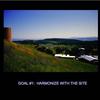For those who consider sustainability in their decisions day to day, what are the things they think of? A greener car, local food, reusable water bottles – but what about the buildings they dwell in? Well that’s essentially all the U.S. Green Building Council, or the USGBC, thinks about.
Created in 1993, the USGBC is a non-profit organization with a focus on setting the standard for creating cost-effective, energy efficient buildings. According to the USGBC, “Buildings in the United States are responsible for 39% of CO2 emissions, 40% of energy consumption, 13% water consumption and 15% of GDP per year, making green building a source of significant economic and environmental opportunity.” The goal of the Council is that increased building efficiency can meet 85% of future US energy demand, and create over 2 million American jobs.
Perhaps the most familiar aspect of the USGBC in the Rochester community is the LEED certification program. LEED is an internationally recognized ranking system, established by the USGBC in 1998, meant to give building owners a framework for green design, construction, and operation.
LEED measures the sustainability of a building through aspects of the construction and operation of a building such as water and energy use, building materials, and even the awareness and education of sustainability provided to the occupants of the building.
The University is no stranger to the LEED certification program, as it is currently home to the completed LEED certified gold Saunders Research Building. Come fall 2012, the University will also open the doors to the O’Brien Residential Hall on the River Campus, targeted to meet LEED certified gold standards.
By Grace Interlichia, class of 2014
Related articles






